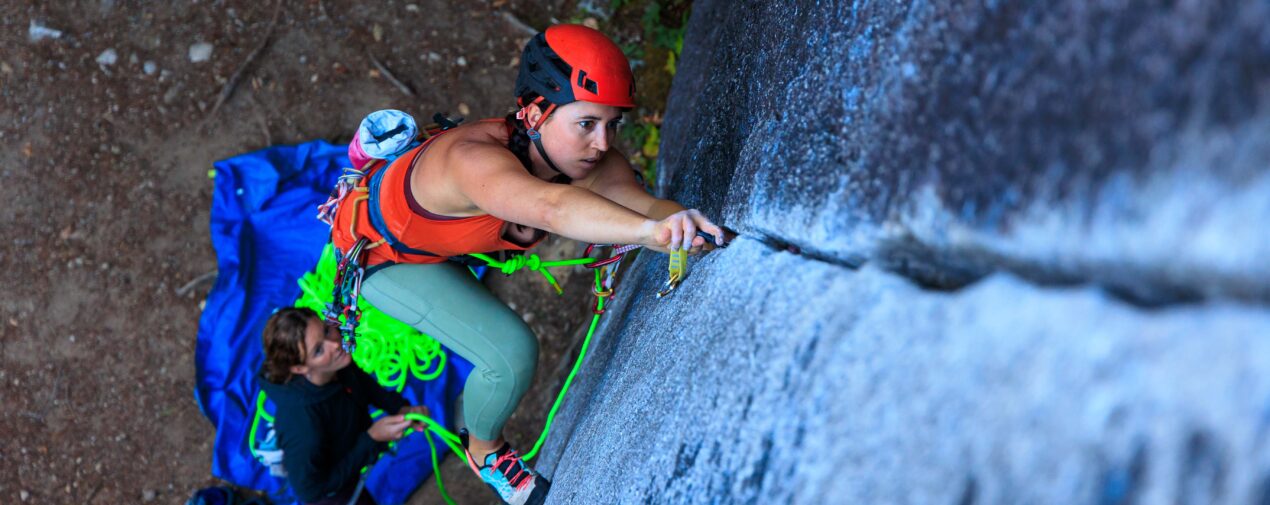So You Want to Start Crack Climbing?
Crack climbing is an incredibly fun and challenging activity. If you master the craft of crack climbing it will take you all around the world, up incredible mountain scapes, and over cliffsides. Crack climbing is something every climber should have a basic understanding of. It will deepen your understanding of rock climbing, and improve all of your climbing techniques!
So! Welcome to your comprehensive guide to crack climbing. In this article I will cover everything from what crack climbing is, to the benefits of it, to how to get started, and equipment you will need to do it.
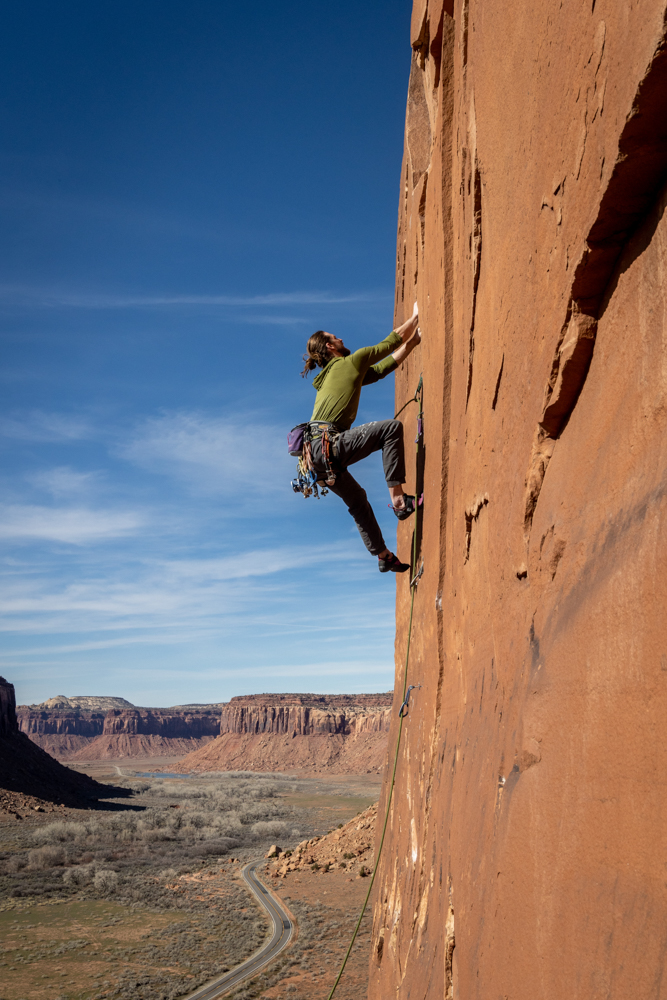
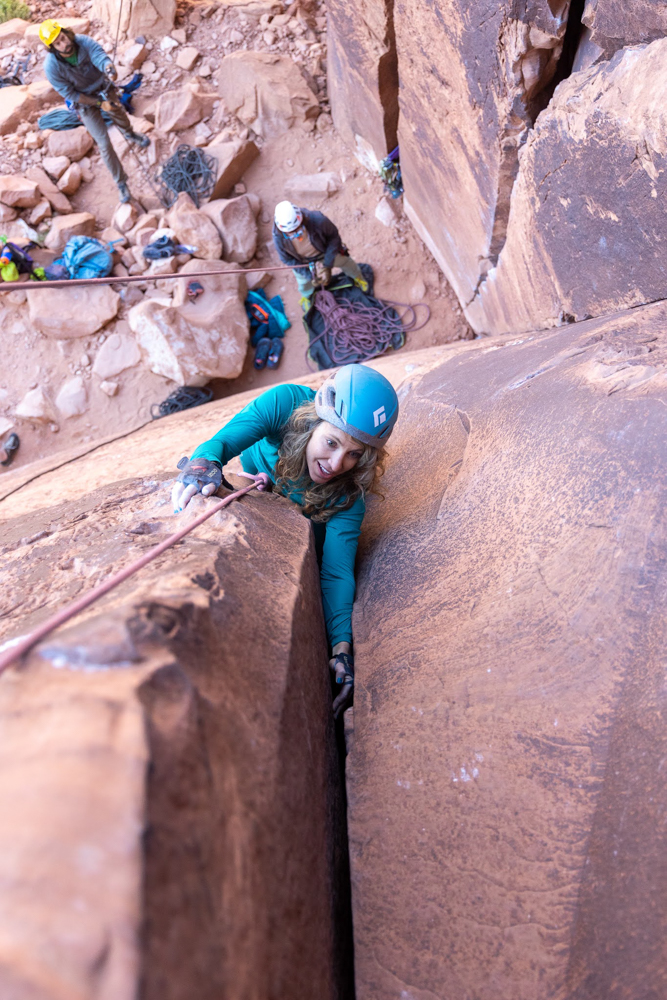
What is Crack Climbing
Crack climbing is a style of rock climbing that involves jamming your hands and feet into cracks instead of pulling on face holds.
In crack climbing there is a LOT of lingo, so I will briefly define some terms below.
Jam (any type)
A jam is how you place your hand into a crack. Saying “I’m jamming” is the active version of the passive action, to Jam. You can “jam” your hands, feet, fists, fingers, and your whole body into a crack!
Tips Crack
A crack only big enough for your fingertips to fit into.
Finger Crack
A crack just big enough to fit your fingers up to the second knuckle into
Rattly Fingers
A crack just slightly bigger than your fingers and smaller than your ring lock
Ring Locks
A style of crack climbing that requires “locking” the top of your thumb, up to the first knuckle, against the bottom of your pointer and ring fingers above the second knuckle (pictured below).
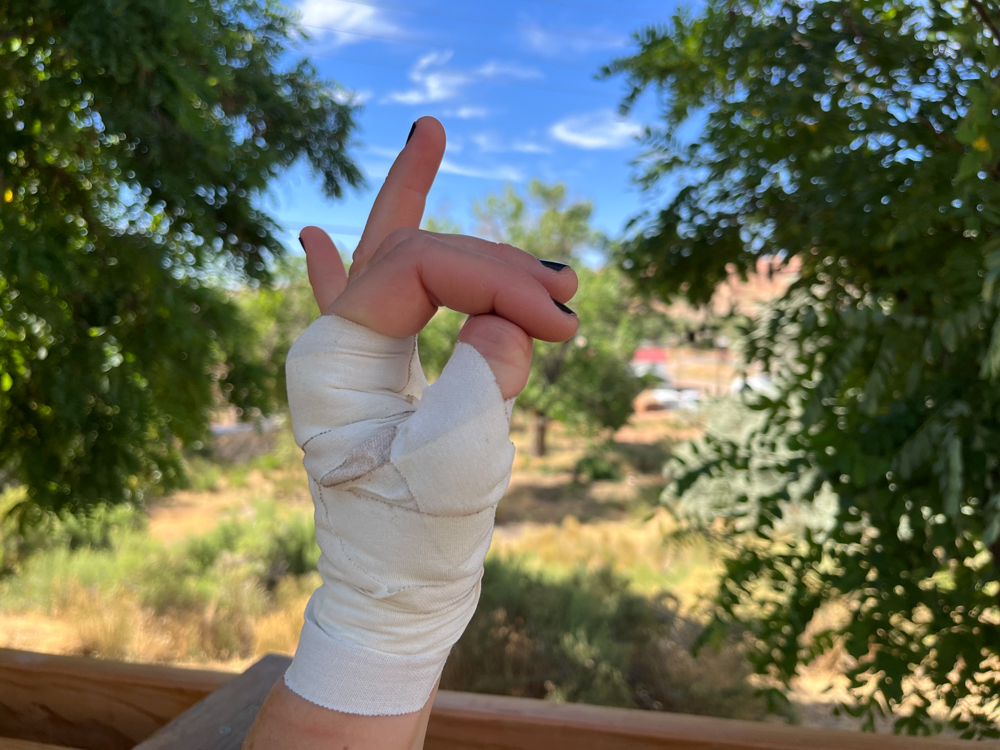
Tight Hands
A tighter version of a standard “Hand Jam” see below for Hand Crack.
Hand Crack (shown below)
The gold standard for crack climbing, and the first technique most people learn. A hand crack requires a “hand jam” so it is often the first thing people learn when crack climbing. A hand crack involves cupping your hand as if you were holding an invisible golf ball in your palm, and bringing the muscle of your thumb towards the center of your palm, all while keeping your fingers as extended as possible (pictured below).

Fist Crack
A fist crack is any crack that is too large for a traditional hand jam. A fist jam requires you to make a fist inside the crack and weight it.
Offwidth
Offwidth is any size crack that is too big for your fists and too small for your whole body to fit inside. It requires a very special and technical style of climbing.
Chicken Wing
A climbing technique that involves jamming the back of your shoulder blade, the heel of your palm, and the back of your elbow against the inside of the crack. It is called a “chicken wing” because of the resemblance to the motion made when doing a chicken dance.
Rand Smear
This is what you do with your feet in finger cracks. Smear the rand side–or the pinky side–of your toe into a crack in order to stand up and make upward progress
Foot Jam
This is what you do with your feet in hand cracks. Foot jam properly by twisting your foot at a sharp angle, pinky toe pointed at the ground, big toe pointed at the sky, and pressing it into the crack (pictured below).
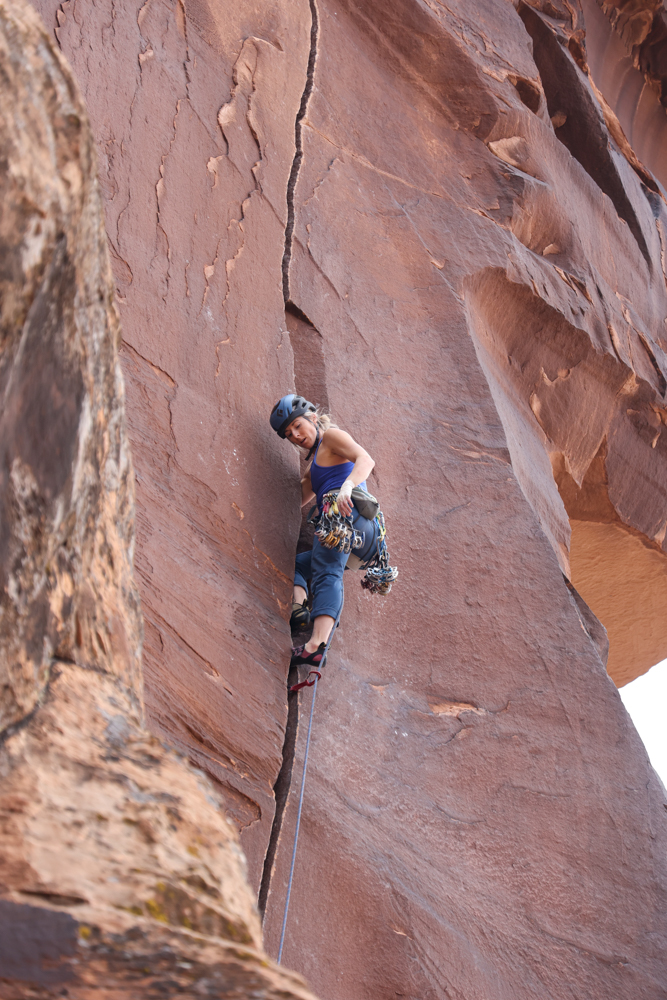
These terms are how we describe different types of crack climbing techniques. This is an incomplete list and by no means encompasses all styles of crack climbing! It’s worth checking out Pete Whittaker’s Crack Climbing, for a full and in depth coverage on all styles of crack climbing.
In short, crack climbing is a technique used in rock climbing to move upwards along cracks in the cliff face. It primarily involves making your hands and feet into different shapes in order to fit them into the cracks!
The Benefits of Crack Climbing
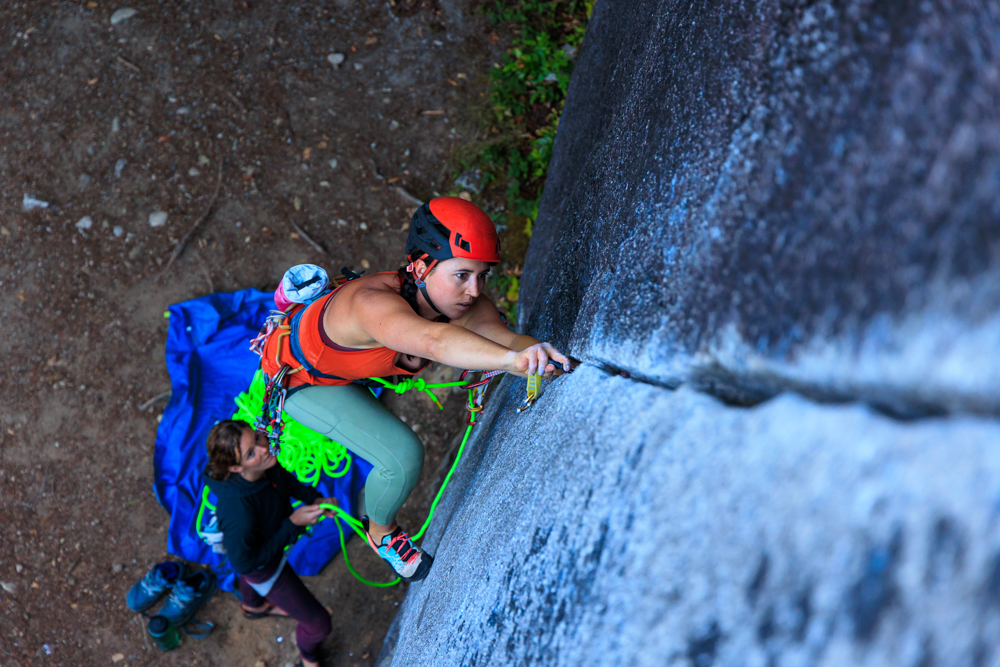
So, why do this? Why crack climb?
There are a lot of answers to this question. Primarily, crack climbing is fun! However, there are also plenty of practical reasons why you would want to crack climb.
Crack features in mountain sides or cliffs bands are often the only way to the top of a certain feature. If you were trying to rely on only face holds–in many places–it would be impossible to reach the top of anything.
Crack climbing allows you to move from crack feature to crack feature, often all the way to the top of a cliff or mountain!
It’s also more environmentally friendly to crack climb, since you place your own means of protection, rather than relying on fixed hardware. (We will touch back on this in our “What Equipment You Need” section!)
How to Crack Climb
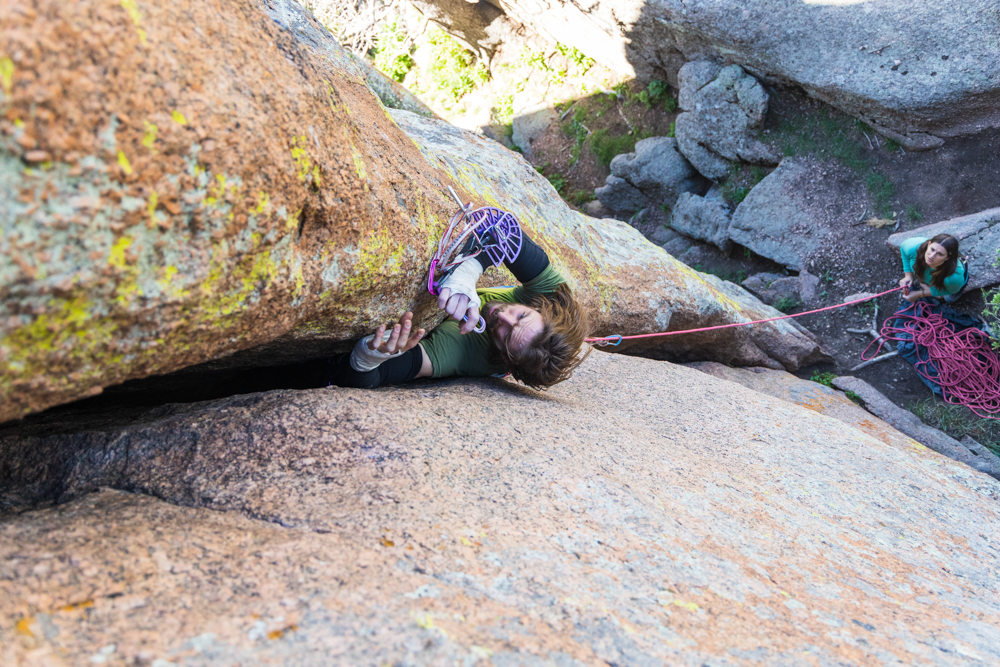
In order to get started crack climbing, you really should work with a climbing guide or attend a crack climbing retreat. There are tons of companies who do guiding for this style of rock climbing, and a quick google search of your area should help you find someone easily.
If you are interested in getting started on your own, then I recommend doing some research! Rock climbing is dangerous and without proper mentorship can be extremely risky. If you have some friends who can take you out climbing with them, that is a great way to get started.
If not, then check out The Trad Climber’s Bible, which covers a lot about crack and trad climbing.
If you’ve already done all that, then there are a few steps you can take yourself.
- Get good at sport climbing
This doesn’t mean “get really strong and send all the 5.12 sport routes.” This means get good at clipping bolts, get good at your rope management, get good at tying your knot and doing your double/triple checks every time you go out rock climbing. If you can master the basics of sport climbing and feel at ease with your systems, then crack climbing will feel a lot easier.
- Find an easy crack that you can practice climbing on.
Extra bonus points if you can set up a top rope on this crack without doing anything dangerous. This might look like climbing the route next to it and setting up the Top Rope on a crack, or it might be a crack climb you can access from the top and set up a top rope easily that way.
There are also often cracks at most climbing gyms for people to practice on!
- Practice hand and foot jams
Hand and foot jams are the most basic forms of crack climbing, and they will take you the farthest in your pursuit of crack climbing. I recommend getting set up on a top rope, having your belayer take in all of the slack so they’re holding the majority of your weight, and then placing your hands and feet in a hand jam and a foot jam and practicing like that. Make sure you have your belayer take all your weight while you’re starting out, this will help you build technique without sacrificing skin, or causing injury.
Once you’ve mastered hand and foot jams with your weight on the rope, try having your belayer give a bit more rope out so they’re only giving you a slight assist.
Do this until you feel confident and ready to do multiple laps on the hand crack route with no rests in between.
- Do a few ‘Mock Leads’
We call them mock leads because in reality, you will be on top rope. Keep yourself on top rope, and keep your belayer attentive. But bring up your Trad Gear (covered in the next section) and place cams every body length or so. You can even pretend to clip the cams as you go past. This will give you practice placing gear and using crack technique at the same time, without having to put yourself in danger. Only once you’ve done this a few times with confidence should you begin to lead crack climbs on your own.
- Have someone check your cam placements
You might be good at placing gear, but is the gear actually good? Hard to say. Make sure you are placing good gear by studying examples of well placed cams. And if you can manage it, get someone who knows more than you to look at your cams and give you feedback. When in doubt, trust a professional or a guide!
What Equipment You Need

Finally, what equipment do you need to crack climb?
I’m covering this last because while all crack climbing is trad (or traditional climbing), not all trad climbing is crack climbing.
Particularly as a beginner, you shouldn’t worry too much about the gear, and you should focus more on the technique and the endurance. Once you have perfected those, then it makes sense to move on to gear and attempt to lead.
What you will need
Climbing Shoes
You’ll want low angle climbing shoes with a stiff sole to get started. Don’t bring anything super aggressive or too tight, you won’t be able to get your feet into the cracks!
Harness
Climbing harnesses should fit comfortably around your waist and your thighs. There should be no pinching or constriction of blood flow. A too tight harness is uncomfortable and can hurt. You also don’t want a harness to fit too loosely, make sure it is snug against your body. It should fit snug, but not tight.
Helmet
The all important climbing helmet! Climbing helmets are primarily used to prevent rock fall from harming you too badly, but they can also help protect your skull in the event of falling backwards and smacking your head against the wall. Get a good climbing helmet that you feel comfortable wearing all day.
Belay Device
There are many different types of belay devices, but I highly recommend some kind of assisted braking device. This could be the Petzl grigri, or the Edelrid Mega Jul.
Rope
Any type of climbing rope will do. Just make sure it has been well taken care of and is long enough for your climb.
Camalots
Your main source of protection when crack climbing! Most people bring 1-2 of each size with them on a given climb. You’ll want to get comfortable with the sizes and their corresponding colors, as well as how to spot good rock, and a well placed cam.
This is not a complete list!
There is seemingly an endless amount of climbing gear out there, so always stay up to date and make sure you’re keeping your gear in good condition.
Have Fun!
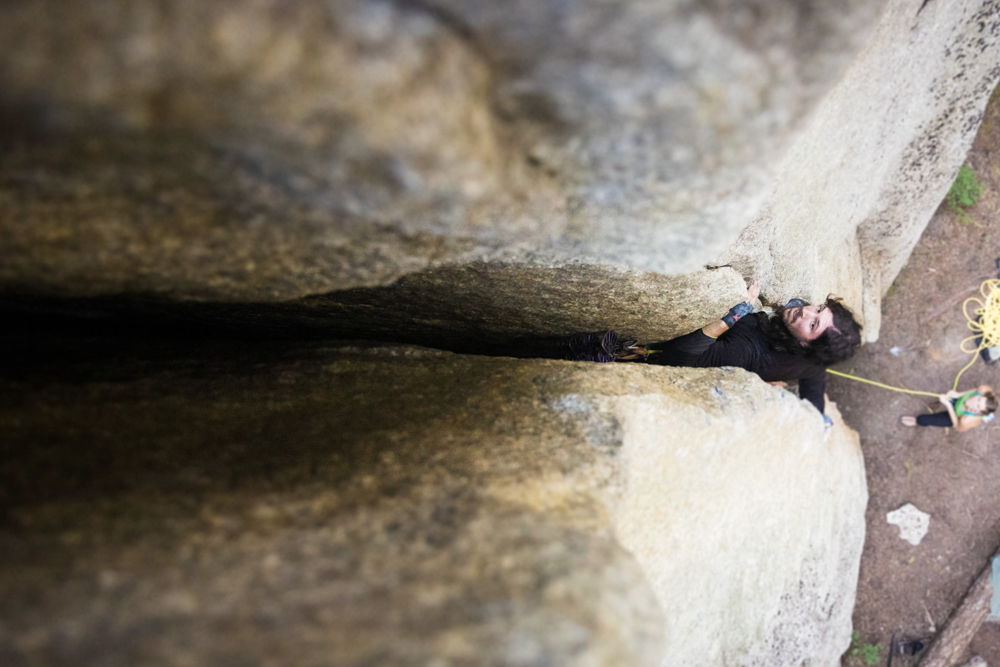
Crack climbing is a fun and challenging activity that allows you to reach the summits that would otherwise not be possible. It requires specialized gear, advanced knowledge, and the support of a willing partner.
It’s exciting getting into a new sport, so I wish you all the best out there. I hope you reach the summits you have been looking for!
Cover Photo Credit: Kaya Lindsay
About the Gear Tester
Kaya Lindsay is a writer, photographer, and filmmaker with a passion for rock climbing and the outdoors.
In 2016 she converted a Sprinter Van into a tiny home and has been traveling around the US & Canada to pursue her passion for rock climbing. Since hitting the road she has begun a career in filmmaking and is currently working on her One Chick Travels series, highlighting solo female travelers who live and work to pursue an adventurous lifestyle. Her films have been highlighted by major brands such as Backcountry and Outside TV. To fulfill her passion for writing, she chronicles her many adventures in her blog. Professionally, she writes for the adventure sports company Outdoor Prolink and The Climbing Zine. Kaya hopes to spend many more years in her tiny home on wheels, Lyra, and is currently living in Moab Utah.

